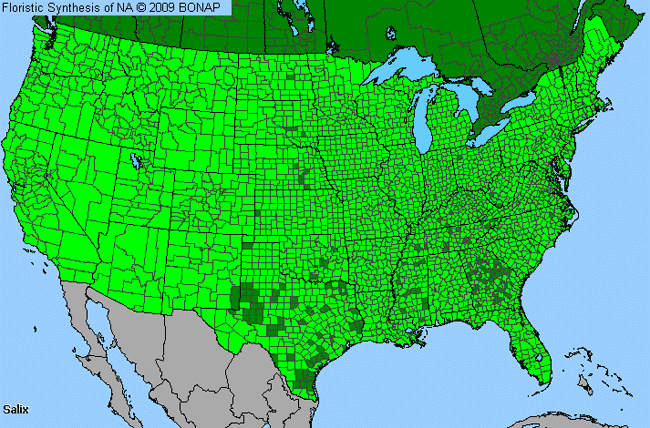Willow (Salix)

Willow Genus Details

Willows are deciduous and rapidly growing trees. The leaves are alternate and long with short stems. The plants are dioecious (staminate and pistillate flowers are on different plants) and the fruit is a catkin. They generally grow along rivers and prefer moist soil. They are usually insect pollinated and occasionally wind pollinated. The appearance of the trees is quite distinct in that their branches hang down in a drooping fashion, commonly down to the ground.
Willow Allergy Info

Although willows elicit strong allergic responses from individuals in allergy tests, willows tend to be pollinated more by insects than by wind, and therefore present fewer people with the allergenic challenge than other tree types.
Willow Pollen Description

Grains are prolate and subprolate; the amb subtriangular and 3-colporate. The colpi are long and narrow with tapering ends.
Pollen grains are 28-34 X 20-21 micrometers.
Species in This Genus

Allergenicity Legend:
 Mild Allergen |
Mild Allergen |
 Moderate Allergen |
Moderate Allergen |
 Severe Allergen |
Severe Allergen |
 Allergy Test Available
Allergy Test Available
Willow (Salix) is a genus of the SALICACEAE family.
This genus includes the following allergenic species:
This genus includes the following allergenic species:















